44 what is not required on food labels
What is not Required on a Food Label? (Complete Guide) While everybody else is talking about the required items on the food labels, let's look at the nutrients not required on a food label. It is essential information for consumers and manufacturers. As a manufacturer of a food product, you would not have to spend extra resources on labeling. However, as a customer, reading these labels, you will have a better idea about the "extras" mentioned on a food label, saving your time and reducing confusion. What is required on a food label? - USDA A meat and poultry label is required to contain 8 features. These are: the product name, inspection legend and est. number, handling statement, net weight statement, ingredients statement, address line, nutrition facts, and; safe handling instructions. These requirements are found in the Code of Federal Regulations (9CFR 317.2/381 Subpart N).
What Is Required On A Food Label? - Chicago Tag While the meaning behind terms such as low fat (less than 3g of fat per serving), low cholesterol (20mg or less per serving) or zero trans fat (contains less than 0.5g per serving) aren't FDA-required disclosures on food labels, any such health claims must be backed up by laboratory testing and printed nutritionals.

What is not required on food labels
Nutrition Labels 101: What's Required? What's Optional? Vitamins A and C will no longer be required on the FDA's Nutrition Facts labels (though manufacturers may still include them if they choose), while Vitamin D and Potassium will now be required. The percent of the daily value is expressed in 2% increments from 2-10% of the daily value; in 5% increments from 10 to 50% of the daily value; and in 10% increments if the level is above 50%. Exemption from Nutrition Labeling Requirements - FDA Reader Dec 11, 2018 ... Foods that are Exempt From Labeling Requirements: · Raw fruits · Vegetables · Fish · Dietary Supplements (they are regulated under §101.36) · Certain ... Short Food Labeling Guide - DuraFast Label Company New Blog Fresh produce and seafood do not have to include labels, which makes them exempt from food label regulations as well. Infant formula and infant food have different rules and regulations for labeling. Spices and other foods that provide no significant nutrition do not require the same items to be placed on their labels.
What is not required on food labels. U.S. FDA Food Labeling Regulations - Top 5 Things to Know Major food allergens include milk, eggs, fish, shellfish, tree nuts, wheat, peanuts, and soybeans. 4. Labels must be printed in English FDA requires that all mandatory words, statements, and other information on labels appear in English. PDF General Food Labeling Requirements - California required. Other label information, such as health claims and nutrient content claims, are voluntary. These label statements are based on the following statutes: 1. Fair Packaging and Labeling Act (FPLA) of 1967, 2. Federal Food, Drug, and Cosmetic Act (FD&C) 3. Nutrition Labeling and Education Act of 1990 (NLEA), 4. Packaging and labelling - Food Standards Agency Retained EU law will not apply in these circumstances. This page highlights the requirements of Regulation No. 1169/2011, the Food Information to Consumers (FIC) ... The New Nutrition Facts Label | FDA The U.S. Food and Drug Administration (FDA) has updated the Nutrition Facts label on packaged foods and drinks. FDA is requiring changes to the Nutrition Facts label based on updated scientific ...
Which of the following is not required by law to be listed on a food label? Which of the following foods does not require a label? Raw fruits, vegetables, and fish are exempt from nutrition fact labeling. Foods that contain insignificant amounts (insignificant means it can be listed as zero) of all required nutrients (foods that fall under this exemption include tea, coffee, food coloring, etc.). USDA ERS - Food Labeling The Nutrition Facts Label (NFL), mandated through the 1990 Nutrition Labeling and Education Act (NLEA), is a familiar feature on packaged food. The label has changed only slightly since its inception in 1994, with trans fat added in 2006 to the nutrients required to be listed. In a 2012 report, ERS researchers found that between 2005 and 2010 ... What information is NOT required on food labels? A. Nutrition facts What information is NOT required on food labels? A. Nutrition facts B. Price C. Daily values D. Ingredients Get the answers you need, now! 7008069 7008069 05/13/2020 Health High School answered What information is NOT required on food labels? A. Nutrition facts B. Price C. Daily values D. Ingredients 2 See answers Advertisement Advertisement ... 4 Common Food Label Violations + How to Avoid Them These claims include "healthy," "no added sugar," "good source of iron," "low sodium," and "plus fiber.". Although the safety of these food products is not a concern, the FDA has not authorized most nutrient content claims for foods that are intended for infants and toddlers. Unauthorized Health Claims: Everyone would love ...
Food Product Labeling Basics | Oklahoma State University Information on label statements required for foods intended to be useful in maintaining or reducing body weight are found in 21 CFR 105.66. "Medical Foods," which are foods formulated to be consumed or administered entirely under the supervision of a physician and which are intended for the specific dietary management of a disease or ... My Food Product: Do I Need Nutrition Facts On My Labels? - ReciPal Foods that contain insignificant amounts (insignificant means it can be listed as zero) of all required nutrients (foods that fall under this exemption include tea, coffee, food coloring, etc.). Foods with total packaging surface area available for labeling of less than 12 square inches. What is Required on a Food Label? | Sttark Of course, if you have a single-ingredient food product, such as honey, an Ingredients List is not necessary. Some exceptions to this include added sweeteners, flavors, etc, in which case you will need to list. Always list ingredients by their common name, so say "sugar" and not "sucrose." Foods exempt from nutrition labelling - a PID Guide Mandatory nutrition information on processed foods; · Mandatory origin labelling of unprocessed meat from pigs, sheep, goats and poultry. · Highlighting allergens ...
5 Basic Elements that MUST be on Your Food Label Sugar, fat, and sodium content. Calorie counts and serving size. Freshness. Organic. GMOs. If they can't find what they're looking for or don't understand the label, they'll buy something else. In that same study, researchers learned people are more willing to buy a product if it's clearly labeled as 'healthy.'.
Changes to the Nutrition Facts Label - FDA Mar 7, 2022 ... Vitamins A and C are no longer required but can be included on a voluntary basis. While continuing to require “Total Fat,” “Saturated Fat,” and ...
Food Labeling - USDA The Food Safety and Inspection Service (FSIS), a public health agency within the USDA, is responsible for ensuring that the nation's commercial supply of meat, poultry, and egg products is safe and correctly labeled and packaged. FSIS issues policy guidance and information, memorandums, and nutrition labeling information.
Menu Labeling Requirements | FDA - U.S. Food and Drug Administration May 7, 2018 is the compliance date for the menu labeling final rule. On this date, consumers will have access to calorie and nutrition information in certain chain establishments covered by the ...
Should food labeling be mandatory? Explained by FAQ Blog What should you avoid on food labels? Trans-Fat. ... Partially Hydrogenated Oils. ... High Fructose Corn Syrup (HFCS) ... Artificial Sweeteners such as Aspartame, Sucralose, and Saccharin. ... Sodium Benzoate and Potassium Benzoate. ... Sodium Nitrites and Sodium Nitrates. ... MSG (monosodium ...
What foods do not require a nutrition facts label? - Sharecare In the National Labeling and Education Act, certain foods are exempt from nutrition labeling. These include: Ready-to-eat food that is not for immediate consumption but is prepared on site. For example, products from bakeries and delis or candy store items. Foods that do not contain significant amounts of nutrients.
Basics of Labeling | Food Safety and Inspection Service Basics of Labeling. A Guide to Federal Food Labeling Requirements For Meat, Poultry, and Egg Products (PDF Only) A user-friendly, comprehensive guide to assist food companies in the development of food labels that comply with the array of requirements policies. Consumer Perceptions of Not-Ready-to-Eat Meat and Poultry Labeling Terminology (PDF ...
Labeling Policies | Food Safety and Inspection Service labeling required under this subchapter and the net quantity of contents is shown with the same prominence as the most conspicuous feature of a label. Done in Washington, DC, on March 22, 2006. ... Final rule amending the nutrition labeling regulations to change the definition of "meal-type" products to allow for nutrient content claims on ...
Food labelling - general EU rules - Your Europe - European Union not misleading; indelible. Mandatory information for prepacked foods. What type of information are you required to mention? name of the food; ingredient list ...
Does all food need a label? - Safe Food & Water Essentially, there are five components necessary on the label of a licensed food product: The statement of identity. The product's net weight. Manufacturer's address. Nutrition facts (there are some exemptions to requirements for the nutrition facts) Ingredient list, which includes allergen labeling.
PDF Food Labeling Guide - Food and Drug Administration FD&C Act requires most foods to bear nutrition labeling and requires food ... material and is not permitted to be placed between the required labeling on.
Food Labeling & Nutrition | FDA Food labeling is required for most prepared foods, such as breads, cereals, canned and frozen foods, snacks, desserts, drinks, etc. Nutrition labeling for raw produce (fruits and vegetables) and...
Labeling Requirements for Restaurants and Vending Machines As required by statute, FDA's final rule for nutrition labeling in chain restaurants and similar retail food establishments will provide consumers with clear and consistent nutrition information ...
FDA Food Product Labeling & Packaging Requirements - ESHA Some states require dates on some foods. You will need to check into the specific regulations for your state and food. As far as placement on the package, the date cannot interfere with required labeling elements and must show the month, day, and year immediately adjacent to an explanatory phrase ("best before," "sell by," etc.) Learn More
Food Labeling Requirements for FDA Compliant Label Design - enKo Products Food allergens must be declared prominently, as required by the Food Allergen Labeling and Consumer Protection Act (FALCPA). The eight major food types that cause allergies are milk, egg, fish, Crustacean shellfish, tree nuts, wheat, peanuts and soybeans. We shall discuss food allergen labeling requirements in the next blog.
Optional Nutrients On The Food Label - LabelCalc Sep 26, 2017 ... While the FDA requires that some specific vitamin, mineral, and macronutrient information be included on nutrition labels, other nutrient ...
Short Food Labeling Guide - DuraFast Label Company New Blog Fresh produce and seafood do not have to include labels, which makes them exempt from food label regulations as well. Infant formula and infant food have different rules and regulations for labeling. Spices and other foods that provide no significant nutrition do not require the same items to be placed on their labels.
Exemption from Nutrition Labeling Requirements - FDA Reader Dec 11, 2018 ... Foods that are Exempt From Labeling Requirements: · Raw fruits · Vegetables · Fish · Dietary Supplements (they are regulated under §101.36) · Certain ...
Nutrition Labels 101: What's Required? What's Optional? Vitamins A and C will no longer be required on the FDA's Nutrition Facts labels (though manufacturers may still include them if they choose), while Vitamin D and Potassium will now be required. The percent of the daily value is expressed in 2% increments from 2-10% of the daily value; in 5% increments from 10 to 50% of the daily value; and in 10% increments if the level is above 50%.









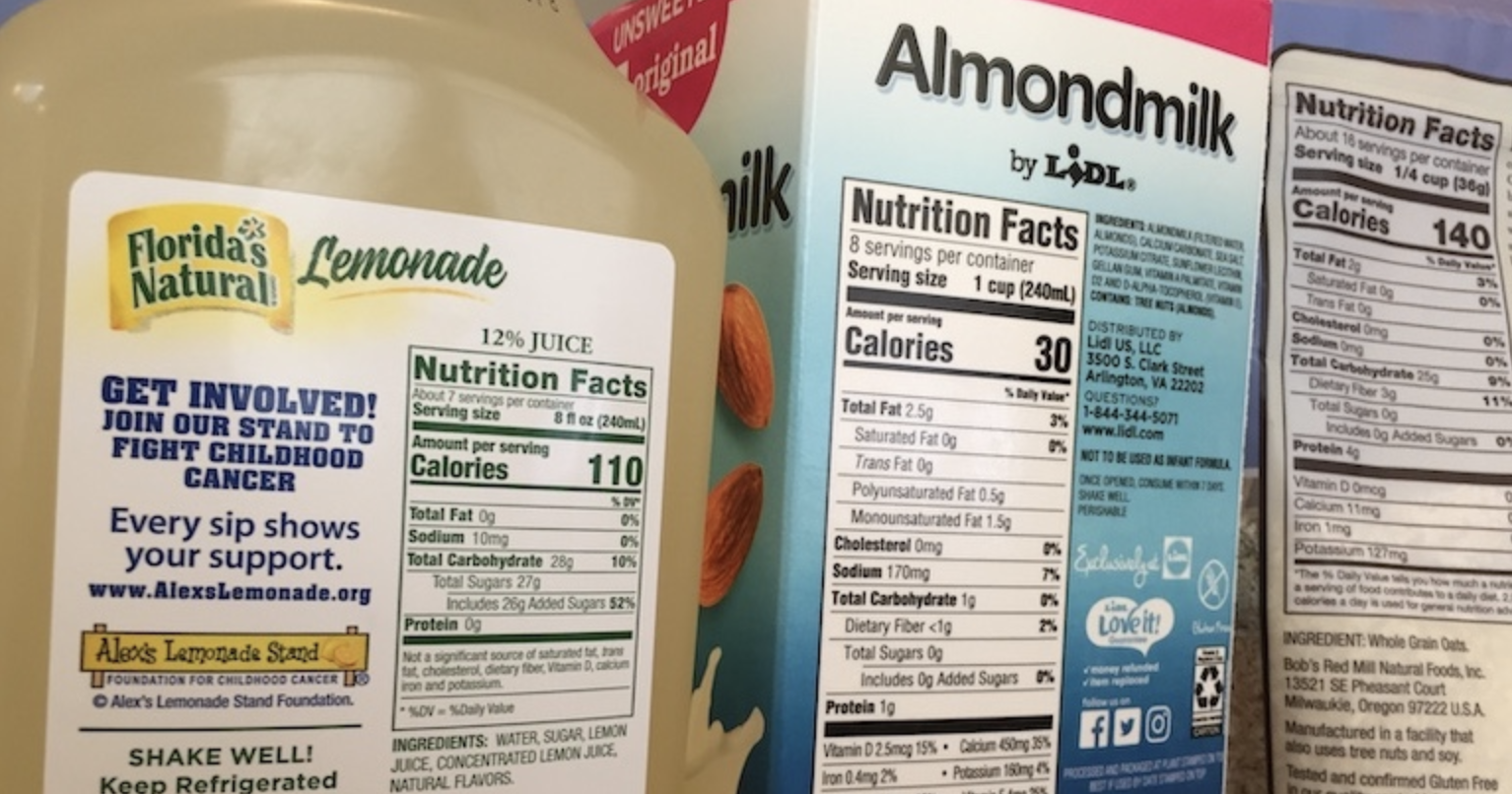




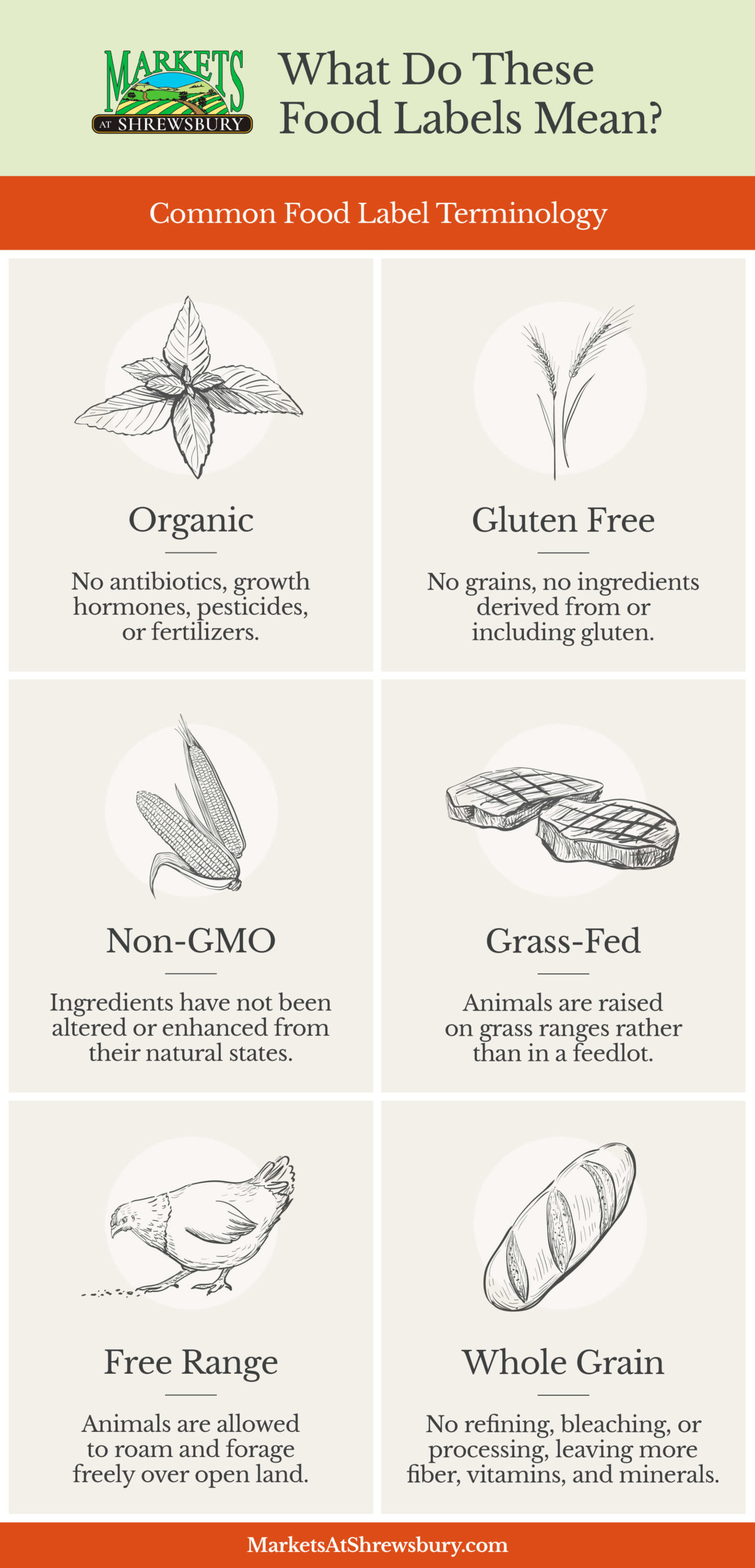




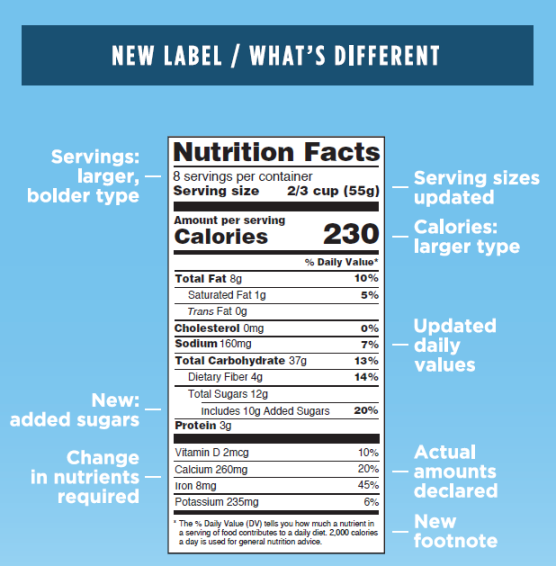
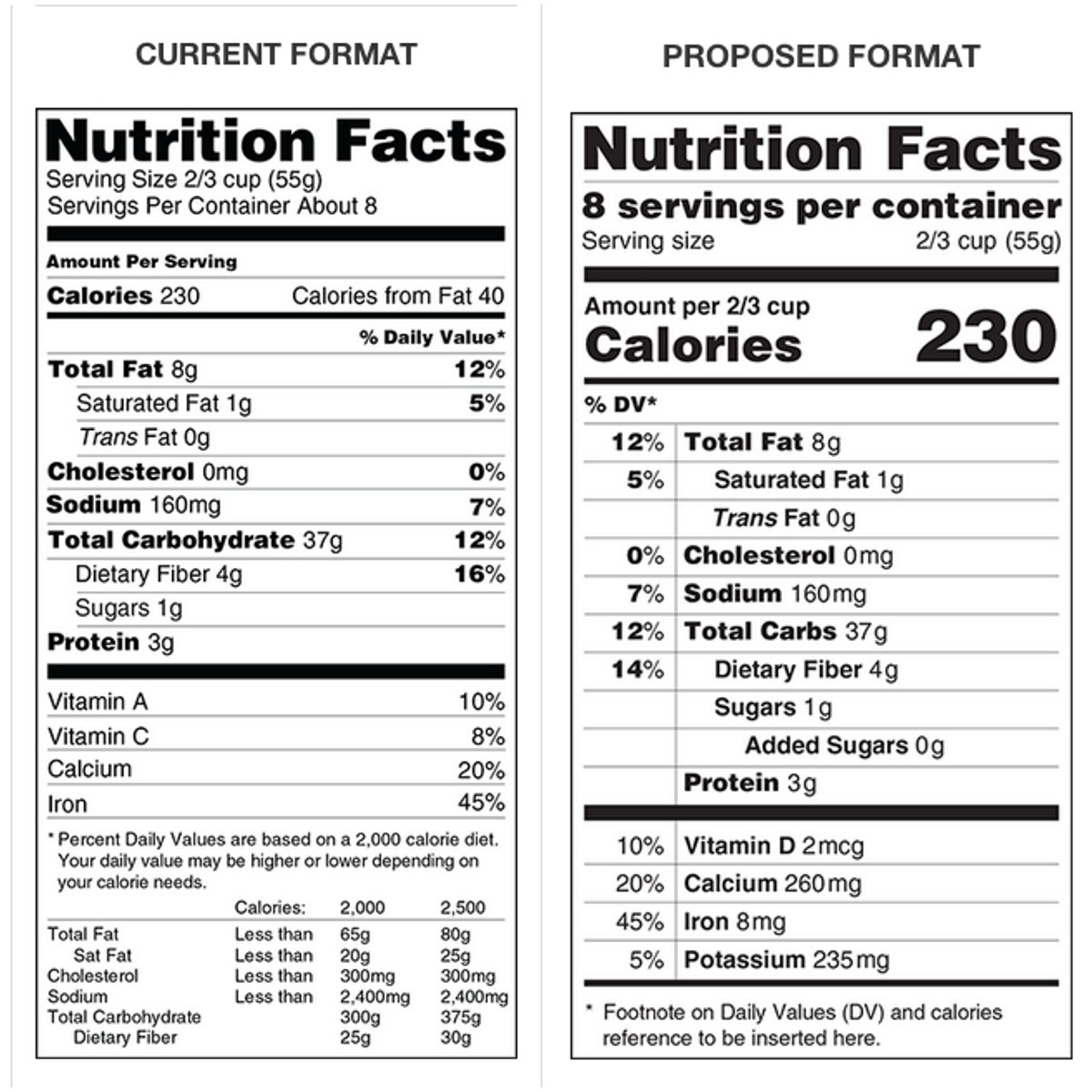
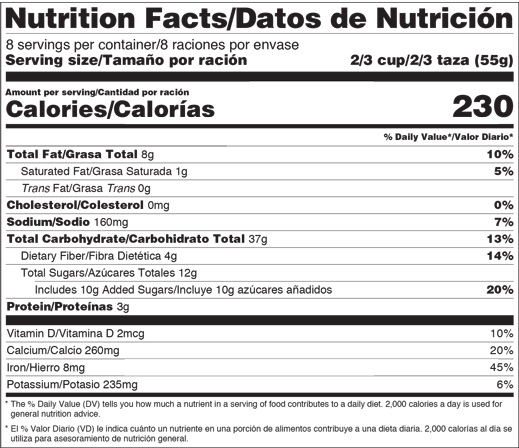
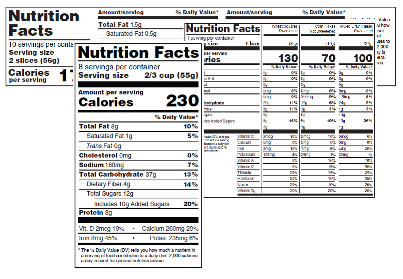





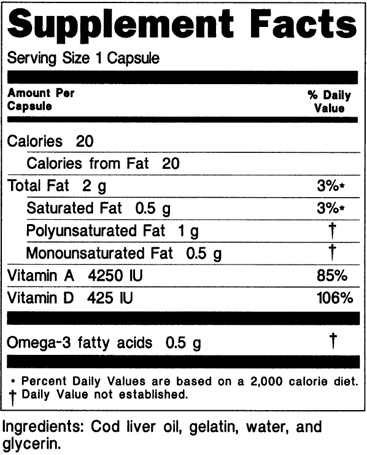
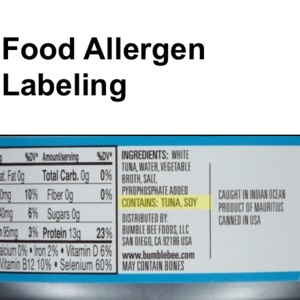


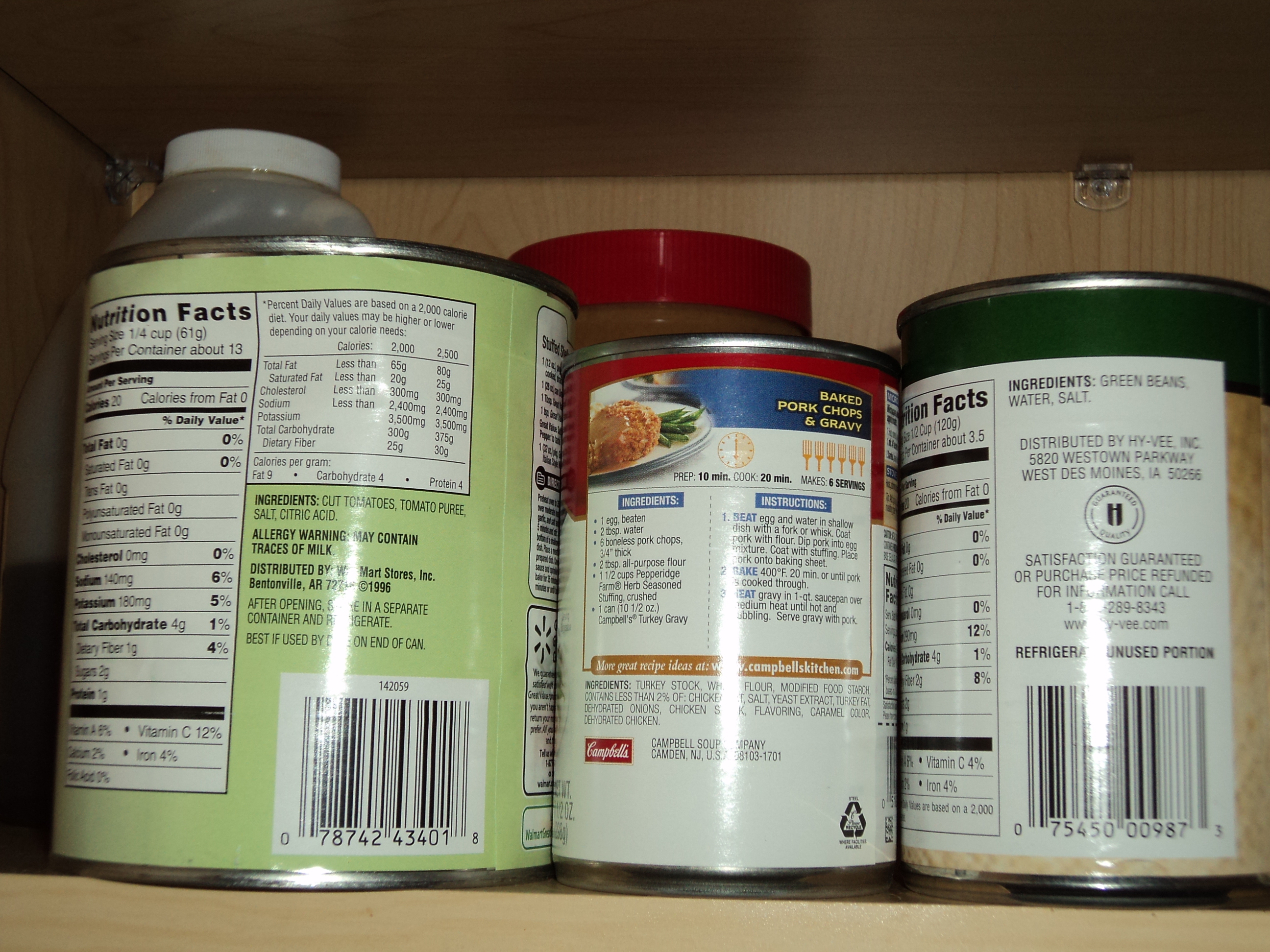



Post a Comment for "44 what is not required on food labels"